Exploring the 12-Step Program in Rehabilitation

In the realm of addiction recovery, the 12-Step Program has emerged as a beacon of hope and a roadmap to recovery for countless individuals grappling with substance abuse. Originally introduced by Alcoholics Anonymous (AA) in the 1930s, the 12-Step Program has since become a cornerstone in various rehabilitation settings, offering a structured and holistic approach to overcoming addiction. This article delves into the essence of the 12-Step Program and its profound impact on the recovery journey.
The 12-Step Program is a set of guiding principles outlining a course of action for recovery from addiction, not limited to alcoholism. While originally designed for those struggling with alcohol addiction, the program has been adapted and adopted by various Anonymous fellowships, such as Narcotics Anonymous (NA), Gamblers Anonymous (GA), and more.
- Admitting Powerlessness: The first step invites individuals to acknowledge their lack of control over their addiction, fostering humility and self-awareness.
- Believing in a Higher Power: This step encourages individuals to recognize a power greater than themselves, whether it be a traditional deity, nature, or a personal concept of spirituality.
- Turning Control Over: Surrendering one’s will to the higher power, step three marks a pivotal moment of relinquishing the illusion of control.
- Taking a Moral Inventory: This step involves a deep and honest self-reflection, identifying character defects and past mistakes.
- Admitting Wrongs: Individuals share their moral inventory with themselves, a higher power, and another person, promoting accountability and transparency.
- Willingness to Change: This step focuses on preparing oneself for the removal of character defects, fostering a commitment to personal growth.
- Seeking Higher Power’s Help: Participants humbly ask their higher power to remove shortcomings, reinforcing the importance of spiritual guidance.
- Making Amends: This step involves making a list of people harmed and being willing to make direct amends to them, except when doing so would cause harm.
- Making Direct Amends: Actively seeking to rectify past wrongs, step nine is about taking responsibility and making restitution.
- Continuing Inventory: Ongoing self-reflection is encouraged in step ten, allowing individuals to promptly admit when they are wrong and make amends.
- Prayer and Meditation: Connecting with a higher power through prayer and meditation helps individuals stay grounded and focused on their recovery.
- Service to Others: The final step emphasizes the importance of giving back and helping others on their journey to recovery, fostering a sense of community and purpose.
Rehabilitation centers incorporate the 12-Step Program into their treatment modalities due to its proven effectiveness in promoting lasting recovery. Group therapy sessions centered around the steps provide a supportive environment where individuals can share experiences, challenges, and triumphs. The peer support system inherent in the 12-Step Program cultivates a sense of belonging and understanding, crucial elements in the recovery process. The program’s spiritual component offers a framework for individuals to explore and strengthen their spiritual beliefs, providing a source of strength and guidance.
The 12-Step Program stands as a testament to the transformative power of self-awareness, humility, and spiritual growth in the face of addiction. Its widespread adoption and success stories underscore its relevance and efficacy in guiding individuals toward lasting recovery. As addiction continues to pose a formidable challenge, the 12-Step Program remains a beacon of hope, illuminating the path toward a life free from the shackles of substance abuse.




